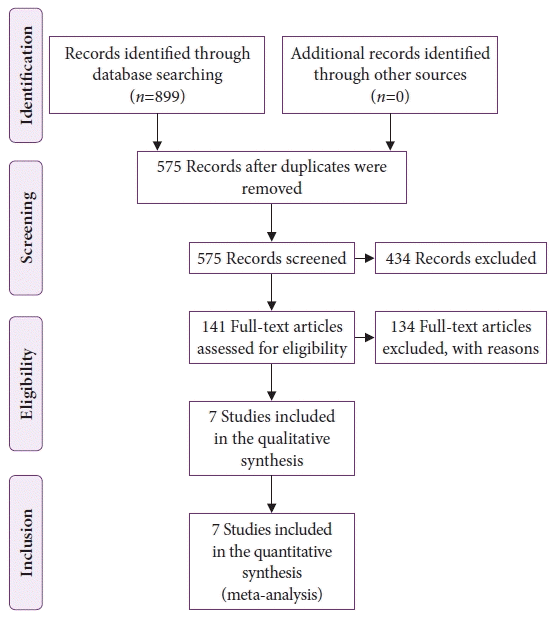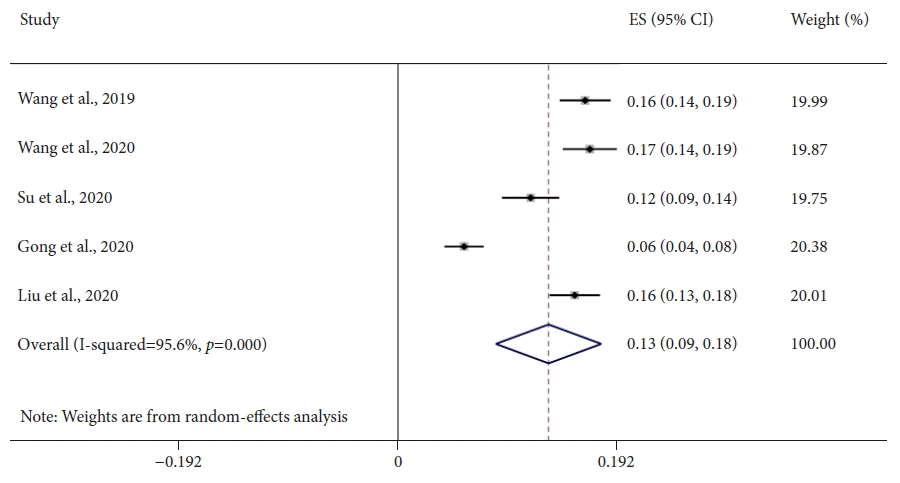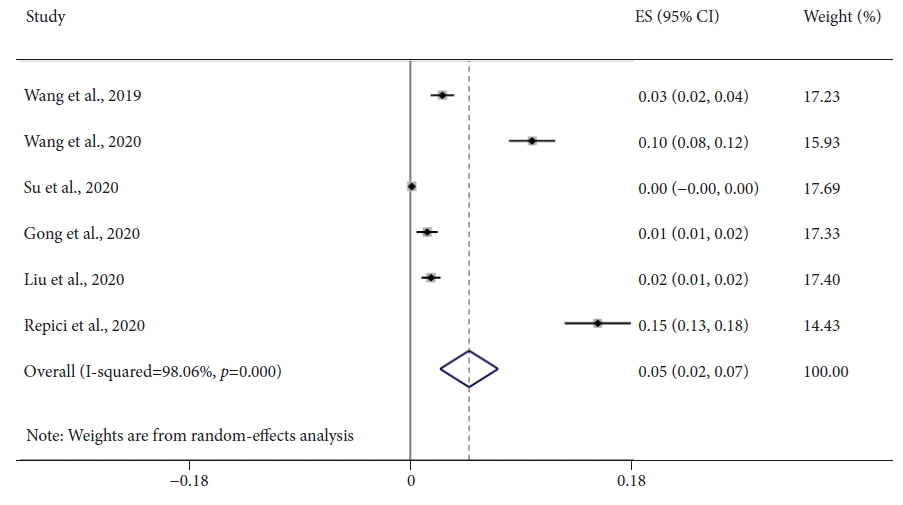1. Arnold M, Sierra MS, Laversanne M, et al. Global patterns and trends in colorectal cancer incidence and mortality. Gut. 2017; 66:683–691.
2. Centelles JJ. General aspects of colorectal cancer. ISRN Oncol. 2012; 2012:1–19.
3. Leslie A, Carey FA, Pratt NR, et al. The colorectal adenoma-carcinoma sequence. Br J Surg. 2002; 89:845–860.
4. Brenner H, Chang-Claude J, Jansen L, et al. Reduced risk of colorectal cancer up to 10 years after screening, surveillance, or diagnostic colonoscopy. Gastroenterology. 2014; 146:709–717.
5. Kahi CJ, Myers LJ, Slaven JE, et al. Lower endoscopy reduces colorectal cancer incidence in older individuals. Gastroenterology. 2014; 146:718–725.e3.
6. Zhao S, Wang S, Pan P, et al. Magnitude, risk factors, and factors associated with adenoma miss rate of tandem colonoscopy: a systematic review and meta-analysis. Gastroenterology. 2019; 156:1661–1674.e11.
7. Corley DA, Jensen CD, Marks AR, et al. Adenoma detection rate and risk of colorectal cancer. N Engl J Med. 2014; 370:1298–1306.
8. Rutter MD, Beintaris I, Valori R, et al. World Endoscopy Organization consensus statements on post-colonoscopy and post-imaging colorectal cancer. Gastroenterology. 2018; 155:909–925.e3.
9. Anderson R, Burr NE, Valori R. Causes of post-colonoscopy colorectal cancers based on World Endoscopy Organization system of analysis. Gastroenterology. 2020; 158:1287–1299.e2.
10. Sivananthan A, Glover B, Patel K, et al. The evolution of lower gastrointestinal endoscopy; where are we now. Ther Adv Gastrointest Endosc. 2020; 13:2631774520979591.
11. Harlow C, Sivananthan A, Ayaru L, et al. Endoscopic submucosal dissection: an update on tools and accessories. Ther Adv Gastrointest Endosc. 2020; 13:2631774520957220.
12. Hassan C, Spadaccini M, Iannone A, et al. Performance of artificial intelligence in colonoscopy for adenoma and polyp detection: a systematic review and meta-analysis. Gastrointest Endosc. 2021; 93:77–85.e6.
13. Barua I, Vinsard DG, Jodal HC, et al. Artificial intelligence for polyp detection during colonoscopy: a systematic review and meta-analysis. Endoscopy. 2021; 53:277–284.
14. Nazarian S, Glover B, Ashrafian H, et al. Diagnostic accuracy of artificial intelligence and computer-aided diagnosis for the detection and characterization of colorectal polyps: systematic review and meta-analysis. J Med Internet Res. 2021; 23:e27370.
15. Moher D, Liberati A, Tetzlaff J, et al. Preferred reporting items for systematic reviews and meta-analyses: the PRISMA statement. PLoS Med. 2009; 6:e1000097.
16. Ng S, Sreenivasan AK, Pecoriello J, et al. Polyp detection rate correlates strongly with adenoma detection rate in trainee endoscopists. Dig Dis Sci. 2020; 65:2229–2233.
17. Delavari A, Salimzadeh H, Bishehsari F, et al. Mean polyp per patient is an accurate and readily obtainable surrogate for adenoma detection rate: results from an opportunistic screening colonoscopy program. Middle East J Dig Dis. 2015; 7:214–219.
18. Jadad AR, Moore RA, Carroll D, et al. Assessing the quality of reports of randomized clinical trials: is blinding necessary? Control Clin Trials. 1996; 17:1–12.
19. Wang P, Berzin TM, Glissen Brown JR, et al. Real-time automatic detection system increases colonoscopic polyp and adenoma detection rates: a prospective randomised controlled study. Gut. 2019; 68:1813–1819.
20. Luo Y, Zhang Y, Liu M, et al. Artificial intelligence-assisted colonoscopy for detection of colon polyps: a prospective, randomized cohort study. J Gastrointest Surg. 2021; 25:2011–2018.
21. Su JR, Li Z, Shao XJ, et al. Impact of a real-time automatic quality control system on colorectal polyp and adenoma detection: a prospective randomized controlled study (with videos). Gastrointest Endosc. 2020; 91:415–424.e4.
22. Gong D, Wu L, Zhang J, et al. Detection of colorectal adenomas with a real-time computer-aided system (ENDOANGEL): a randomised controlled study. Lancet Gastroenterol Hepatol. 2020; 5:352–361.
23. Liu WN, Zhang YY, Bian XQ, et al. Study on detection rate of polyps and adenomas in artificial-intelligence-aided colonoscopy. Saudi J Gastroenterol. 2020; 26:13–19.
24. Repici A, Badalamenti M, Maselli R, et al. Efficacy of real-time computer-aided detection of colorectal neoplasia in a randomized trial. Gastroenterology. 2020; 159:512–520.e7.
25. Wang P, Liu X, Berzin TM, et al. Effect of a deep-learning computer-aided detection system on adenoma detection during colonoscopy (CADe-DB trial): a double-blind randomised study. Lancet Gastroenterol Hepatol. 2020; 5:343–351.
26. Zachariah R, Samarasena J, Luba D, et al. Prediction of polyp pathology using convolutional neural networks achieves “resect and discard” thresholds. Am J Gastroenterol. 2020; 115:138–144.
27. Rodriguez-Diaz E, Baffy G, Singh SK. Development of computer-assisted real time histology of colorectal polyps based on the nice criteria using nearfocus narrow-band imaging. Gastroenterology. 2017; 152(5 Suppl 1):S81.
28. James P, Hegagi M, Hegagi M, et al. Variable endoscopist performance in proximal and distal adenoma detection during colonoscopy: a retrospective cohort study. BMC Gastroenterol. 2018; 18:73.
29. Vleugels JL, Hassan C, Senore C, et al. Diminutive polyps with advanced histologic features do not increase risk for metachronous advanced colon neoplasia. Gastroenterology. 2019; 156:623–634.e3.
30. Kim JY, Kim TJ, Baek SY, et al. Risk of metachronous advanced neoplasia in patients with multiple diminutive adenomas. Am J Gastroenterol. 2018; 113:1855–1861.




 PDF
PDF Citation
Citation Print
Print






 XML Download
XML Download